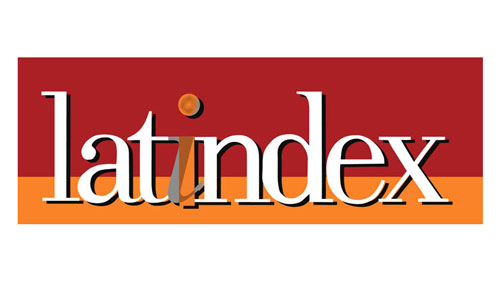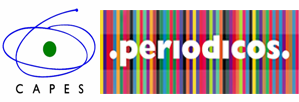Submissions
Submission Preparation Checklist
As part of the submission process, authors are required to check off their submission's compliance with all of the following items, and submissions may be returned to authors that do not adhere to these guidelines.- The contribution is original and unpublished, and is not being evaluated for publication by another journal.
- The paper deals with one of the subjects mentioned in the journal's Editorial Policies.
- The submitted text document (docx) does not contain authorship information.
- The title is brought in both the same language as the article and in English. If the article is written in English, the title is also brought in Portuguese.
- The abstract does not exceed 200 words. Between 3 and 6 keywords are presented in each language. The Summary is organized as follows: Introduction (optional), Objective / Approach, Methodology / Basis of theoretical analysis, Results / Conclusion and Recommendations (optional).
- The text follows the style standards and bibliographic requirements of the ABNT (Brazilian Association of Technical Standards) standards, according to the journal.
- The paper uses the template provided by the Journal. It is in .docx format and contains approximately between 25,000 and 40,000 characters (spaces included).
- It does not have bold letters or underlines. Highlights of words or phrases are in italics.
- Notes are only at the bottom.
- Book reviews: address topics of interest to this magazine in books published no more than one year before submission of the review; do not exceed 6,000 characters with spaces.
- If there are phonetic symbols, these are saved by incorporating "true type" fonts. The source files must be sent as supplementary documents.
- Figures (photos, drawings, graphics) are inserted in the text, as well as sent in separate files, in JPG format, with a resolution of 300 dpi.
- Tables and Figures (photos, drawings, graphs) are numbered in Arabic numerals, followed by the title, in the sequence in which they appear in the text, and do not exceed the dimensions of the printed page (10x17cm), in the "portrait" orientation. Its source is brought down below.
- Direct quotations in a foreign language are translated into the body of the text, the original being presented only in a footnote.
- The author responsible for the submission provides, in the submission metadata fields, all the necessary information from all co-authors (full name with only the last name in the field SURNAME, email, ORCID). Papers whose authorship was wrongly informed at the time of submission (absence of a co-author) will be refused.
- The ORCID of all authors is entered in the User Details field, within the section on authors.
- The text is written in Portuguese, English, Spanish or French. (In any of these cases it must contain an abstract and keywords in Portuguese and English. If the work is written in Spanish or French, it begins with an abstract in the respective language.) It is requested that, before being submitted to the journal , the text (including abstracts) in a foreign language, be reviewed by native speakers of the respective language or by competent non-native speakers with high proficiency in the language on screen.
- All Brazilian authors or foreign authors working in a Brazilian education and research institution have inserted the links to their lattes curricula in the URL-specific field.
Artigos
Política padrão de seção
Porposals for special issues organization
NORMAS PARA PROPOSTA DE ORGANIZAÇÃO DE DOSSIÊ TEMÁTICO
Do editor convidado (proponente)
O proponente, nomeado EDITOR CONVIDADO no dossiê temático, deve possuir título de doutor e ter experiência em pesquisa comprovada no tema proposto.
Poderão ser editores convidados pesquisadores doutores vinculados a instituições de ensino e/ou pesquisa do Brasil ou de outros países.
Uma mesma proposta pode incluir até quatro editores convidados, que dividirão as responsabilidades descritas abaixo.
Cada editor convidado poderá contribuir com apenas um artigo para o dossiê, em autoria ou coautoria.
Das responsabilidades do editor convidado
- Redigir e encaminhar a proposta à Comissão Editorial, incluindo toda a documentação necessária
- Redigir a prévia da chamada para trabalhos ao dossiê temático, que poderá ser editada pela Comissão Editorial
- Indicar lista de possíveis pareceristas que pesquisem no tema proposto e possam ser convidados a avaliar as submissões
- Captar textos em potencial, fazendo convites específicos a pesquisadores que trabalhem com o tema para que submetam manuscritos ao dossiê
- Participar as reuniões online agendadas com o editor-mediador, que instruirá sobre o processo editorial bem como sobre o uso da plataforma do Sistema Eletrônico de Editoração de Revistas (SEER)
- Utilizar a plataforma do SEER para acessar, registrar e comunicar suas avaliações
- Avaliar e emitir parecer (quanto ao conteúdo) sobre todas as submissões previamente aprovadas pela Comissão Editorial (fase 2)
- Definir os pareceristas para cada submissão recebida e efetivamente obter os pareceres (fase 2)
- Em caso de solicitação de ajustes de conteúdo, aprovar o texto final que será enviado para revisão de forma
- Redigir a Apresentação ao dossiê, segundo o gênero ensaio teórico, previamente ao lançamento do dossiê
Das responsabilidades da Comissão Editorial
A Comissão Editorial é compreendida pelos editores permanentes do periódico. São suas atribuições:
- analisar as propostas de organização de dossiês temáticos
- decidir o calendário de publicação dos dossiês, bem como o calendário das chamadas para trabalhos
- mediar todo o processo de editoração desde o recebimento eletrônico das submissões até sua publicação final, incluindo os estágios de avaliação, revisão de texto e diagramação
- instruir os organizadores sobre as ações necessárias para avaliar as submissões recebidas, incluindo suporte à utilização da plataforma editorial SEER
- solicitar ajustes aos autores e conferir as alterações de forma nas novas versões
- tomar a decisão editorial subsidiada pelos pareceres do editor permanente responsável pela submissão, do editor convidado e do(s) parecerista(s) membros do Conselho ou ad hoc
- responsabilizar-se pela revisão de forma, diagramação, alimentação de metadados e indexação dos artigos
Da documentação para a proposta
O proponente enviará a proposta pelo sistema da revista.
Todos os coeditores deverão estar cadastrados no sistema.
Preencher título e resumo da proposta (até 200 palavras).
Anexar arquivo docx contendo:
- Nome e sobrenome, instituição de afiliação e orcid de todos os coeditores
- Link para o currículo lattes de todos os coeditores (no caso de brasileiros)
- Tema e título prévio do dossiê
- Justificativa e relevância temática,
- Áreas de concentração e/ou linhas de pesquisa nas quais o dossiê se insira
- Perspectivas: informações adicionais (por ex, relação com eventos, grupos de pesquisa, volume de submissões esperado, período pretendido entre o início e o encerramento dos trabalhos, considerando 6 meses)
- Lista de pareceristas que serão convidados (indicar pelo menos 10)
Dossie: Portuguese and other heritage languages
Submissions are open for: theoretical articles; articles resulting from emprical research, unpublished reviews of recent books, and interviews
Translanguage and critical language education in a (post)pandemic context
Submissions open for: articles, reviews and interviews
Copyright Notice
The Horizontes de Linguística Aplicada Journal at http://seer.bce.unb.br/index.php/horizontesla/index is licensed under a Creative Commons Attribution-Noncommercial-No-Derivative License to create 3.0 Unported derivative works.
a. Authors retain the copyright and grant the journal the right to first publication, the work being simultaneously licensed under the Creative Commons Attribution License which allows the sharing of the work with recognition of the authorship of the work and initial publication in this magazine.
b. Authors are authorized to assume additional contracts separately, for non-exclusive distribution of the version of the work published in this journal (eg, publishing in institutional repository or as a book chapter), with acknowledgment of authorship and initial publication in this journal.
Privacy Statement
The names and email addresses entered in this journal site will be used exclusively for the stated purposes of this journal and will not be made available for any other purpose or to any other party.





